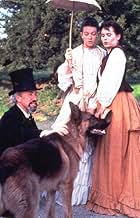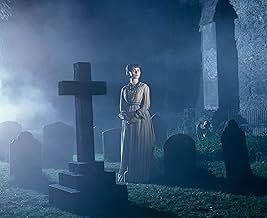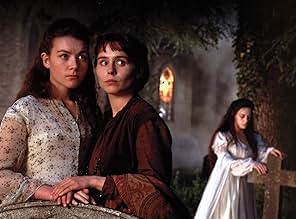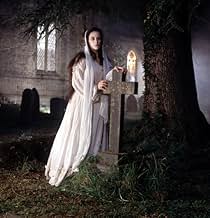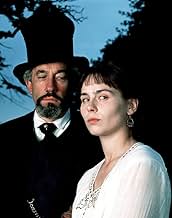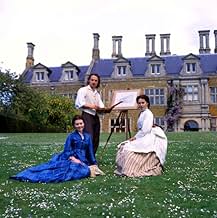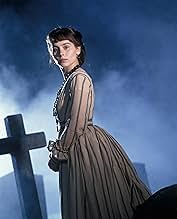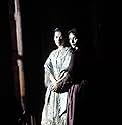Wilkie Collins' "The Woman in White" is a great read--a creepy and funny mystery novel with multiple narrators, one of which is one of the strongest female characters I've ever come across in Victorian fiction. Unlike some of the other IMDB critics of this film version, though, I read it only after seeing the BBC production. While I thoroughly enjoyed the film, its plot is almost totally different from the novel. It made me wonder if the writers had read two Wilkie Collins novels and decided to combine them, taking the character names from one and the plot twists from the other.
The look of the production is impeccable--gorgeous costumes, lovely English country houses, and a use of light and shadow that perfectly captures the pervasive disquietude. I especially liked that two of the scariest scenes took place in broad daylight, in light-colored places, instead of such customary gothic locales as dark, cobwebby dungeons. The BBC's recent Victorian productions have all striven for an accuracy of period detail (no more beehive hairdos worn with hoopskirt gowns)--that includes dirt and squalor, along with sumptuous furnishings. The Pre-Raphaelite art angle, though not in the book, is neatly tied in, too.
And the acting is excellent. Tara Fitzgerald and Justine Waddell seem to have cornered the market on these period pieces, and Fitzgerald in particular, is perfect as Marion, the steely but loving sister of the soft and sweet Laura. Ian Richardson (the diabolical MP Francis Urquhart in the "House of Cards" trilogy) is brilliant as the girls' hypochondriac uncle, thrown into paroxysms at the sound of loud noises. Simon Callow is Count Fosco, the villain who kills with a caress. He and Marion are worthy opponents; don't miss the scene in the British Museum, when she glares at him over an Egytian sarcophagus and subtly lets him know that she is onto him.
One flaw in the production is the irrelevant voice-over at the beginning and end of the film, but it is not serious enough to mar one's enjoyment of this film.


